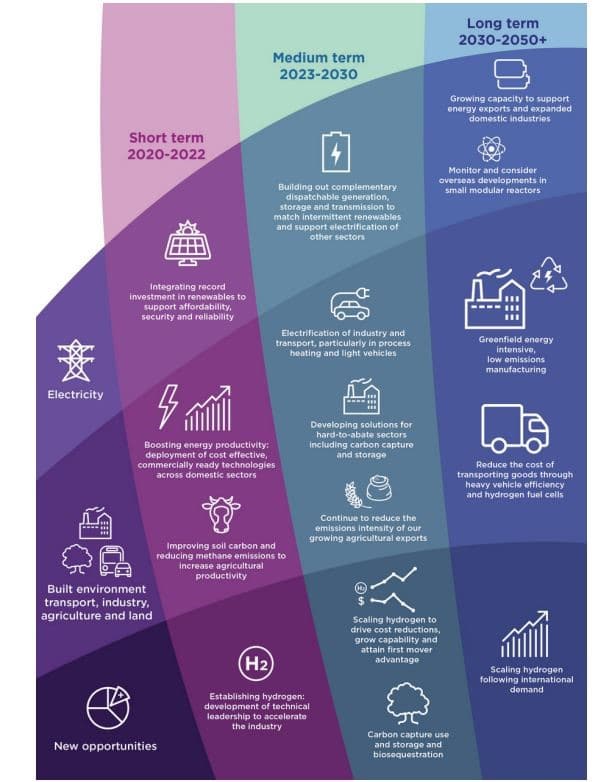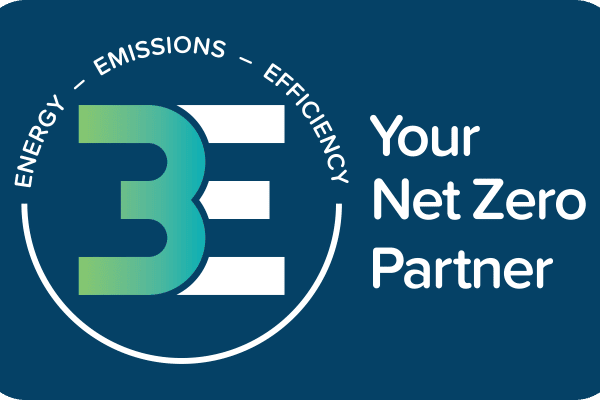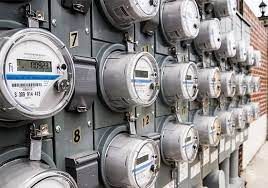In May 2020, the Department of Industry, Science, Energy and Resources released the Technology Investment Road Map outlining a detailed plan on how Australia can remain at the forefront of the global low emissions technological innovation.
The Technology Investment Roadmap will be a cornerstone of Australia’s Long Term Emissions Reduction Strategy, to be released ahead of COP26.
A key goal of this Roadmap is to ensure Australia remains at the forefront of the global low emissions technological innovation. Driving down the cost of deploying low emissions technologies to a point where they are competitive with existing alternatives will deliver meaningful reductions in global emissions.
With the Technology Investment Roadmap, the Morrison Government is seeking to prioritise investment in low emissions technologies that strengthens the Australian economy and supports jobs and businesses and to help Australia reduce global emissions.
Minister for Energy and Emissions Reduction Angus Taylor said the Government sees enormous potential in technologies like hydrogen, carbon capture and storage, soil carbon sequestration, biofuels, resources and energy exports to reduce emissions while strengthening our economy.
“The Government is committed to reducing emissions without imposing new costs on households, while at the same time growing businesses and the economy,”
– Minister Taylor said.
The Government will look to support a wide range of technologies with the potential to reduce emissions across sectors.
“At its core, this is about technology not taxes. It means reducing emissions, not reducing jobs and the economy. It is an approach based on rigour, confidence, optimism, and Australian ingenuity not ideology.
“The Government’s Technology Investment Roadmap is about more than just reducing emissions,” Minister Taylor said.
“This is about developing technologies that will support jobs growth. This is about ensuring that mums and dads and small businesses are paying a fair cost for energy and not imposing taxes on them.”
“This is about backing new industries that will help our regional communities and local economies to prosper. This is about putting Australia at the forefront of research and development, and maintaining our strong track record of reducing global emissions.”
The Australian Government has already invested $10.4 billion into more than 670 clean energy projects with a total project value in excess of $35 billion.
As we recover from Covid-19 pandemic the priority will focus on investments in technology to improve productivity, support the economy and reducing emissions.
Global technology leaders including Germany, European Union, United States and Japan have set in place long term, strategic approaches to their technology innovation and deployment programs. Along with other major economies, such as the United Kingdom have recently implemented similar measures.
The Government’s response is beyond reducing our own emissions but partnering with fast-growing economies in the Indo-Pacific region as we support global efforts.
Priorities and goals towards net zero emissions
The Technology Investment Roadmap will allow Australia to work towards clear priorities over the short, medium and long term. A summary of key technology challenges and opportunities is set out below.
Short term goals (2020-2022) include:
- Integrating record investment in renewables to support affordability, security and reliability
- Boosting energy productivity – deployments of cost-effective, commercially ready technologies across domestic sectors
- Improving soil carbon and reducing methane emissions to increase agricultural productivity
- Establishing hydrogen; development of technical leadership to accelerate the industry
Medium term goals (2023-2030) include:
- Building out complementary dispatchable generation storage and transmission to match intermittent renewables and support electrification of other sectors
- Electrification of industry and transport, particularly in process heating and light vehicles
- Developing solutions for hard-to-abate sectors including carbon capture and storage
- Continue to reduce the emissions intensity of our growing agriculture exports
- Scaling hydrogen to drive cost reductions, grow capability and attain first mover advantage
- Carbon capture use and storage and biosequestration
Long term goals (2030-2050+) include:
- Growing capacity to support energy exports and expanded domestic industries
- Monitor and consider overseas development in small modular reactors
- Greenfield energy intensive, low emissions manufacturing
- Reduce the cost of transporting goods through heavy vehicle efficiency and hydrogen fuel cells
- Scaling hydrogen following international demand
Strategic and system-wide technology investment roadmap
The Technology Investment Roadmap approaches the prioritisation of technology investments in the following eight stages:
- Stage one: setting a clear vision
Australia plays a leadership role in accelerating development and deployment of low emissions technologies - Stage two: Survey of New and Existing Technology
survey of over 140 technologies that can have an impact on goals., their technological and commercial readiness, abatement potential and cost effectiveness. - Stage three: Australia’s technological needs and comparative advantage
In the short (to 2022) medium (to 2030) and long term (beyond 2030) - Stage four: Identify priority technologies
Priority technologies will be those that have greatest potential impact on near, medium and long term objectives and goals - Stage five: Identifying most efficient deployment pathways and setting economic goals for key technologies
The government will announce specific technology ‘stretch’ goals for priority technologies including hydrogen - Stage six: Balancing overall investment portfolio
In clean energy by the Commonwealth taking a holistic view across all investments through universities, ARENA, the CEFC and other agencies - Stage seven: Implementing Investments (Institutional Structure)
Optimise delivery vehicles (ARENA, the CEFC and Climate Solutions Fund) and work with other levels of government and the private sector to maximise co-investment - Stage eight: Assessing impact of technological investments
Low emissions technology published each year to communicate progress towards technology goals
This approach will survey new and emerging technology opportunities and challenges for low emission technology investments. This stepwise approach will regularly survey new and emerging technology opportunities and challenges with stakeholders to arrive at economy-wide priorities for low emissions technology investments.
To contribute to this important national conversation or learn more about the Roadmap process, visit: https://consult.industry.gov.au/climate-change/technology-investment-roadmap/







